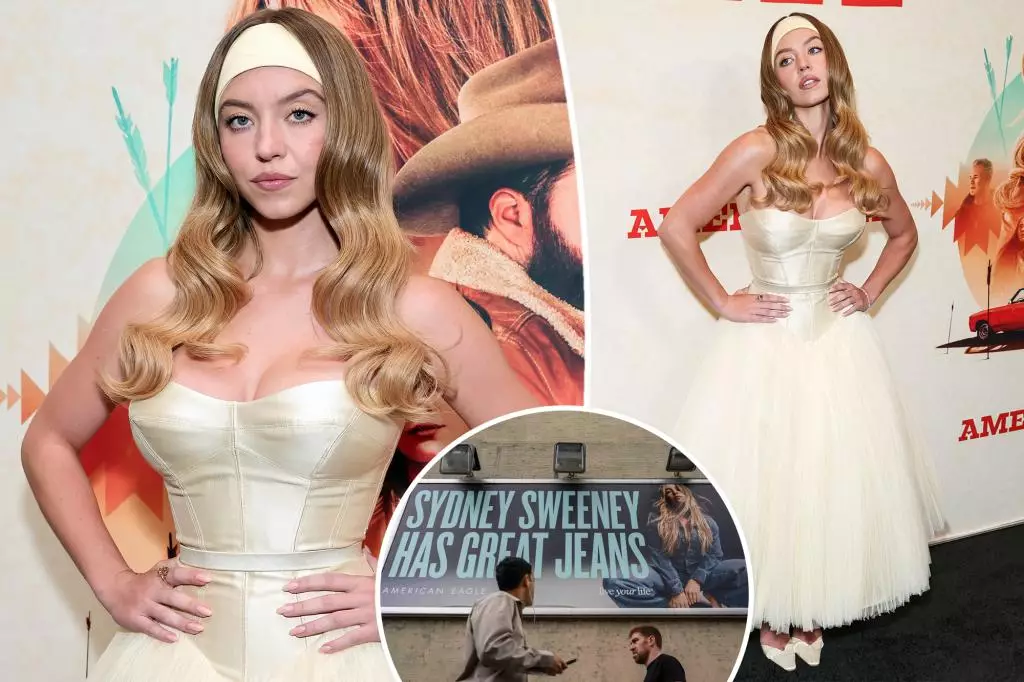In the world of celebrity fashion, appearances often serve as a mirror reflecting not only personal style but also societal expectations and industry standards. Sydney Sweeney’s choice to wear a custom buttery yellow gown to the “Americana” premiere was undoubtedly a statement—one that aimed to challenge conventional red carpet norms and perhaps convey a sense of playful sophistication. Yet, the overwhelming social media backlash reveals a deeper issue: society’s tendency to criticize bold choices rather than celebrate individual expression. Instead of dismissing her look as a fashion misstep, we should consider its intent to defy typical Hollywood glam, encouraging a broader conversation about embracing uniqueness over conformity.
Misguided Criticism and the Power of Context
The reactions to Sweeney’s ensemble—ranging from fashion insults to political jabs—highlight a propensity for superficial judgment. Many commentators focused on trivial aspects like her headband or criticized her look as if it were a personal affront. This pattern emphasizes how societal discourse often oversimplifies complex aesthetic decisions into mere gossip. The comments seem more rooted in a desire to exploit controversy rather than a genuine critique of style. Recognizing this tendency allows us to question the motives behind such harsh judgments and consider how they divert attention from more meaningful discussions about fashion and identity.
The Role of Celebrity Styling in Personal Agency
Celebrity stylists like Molly Dickson wield significant influence over a star’s appearance, yet the power dynamic often leads to blame-shifting when outcomes don’t resonate positively with the audience. The blame directed at Dickson for Sweeney’s look reflects a lack of appreciation for the collaborative nature of styling—a process that involves artistic choices, personal tastes, and sometimes risk-taking. Instead of demonizing the stylist, we should appreciate how styling can serve as an artist’s extension of a star’s personal narrative, even if the final result isn’t universally loved. In this case, Sweeney’s outfit could be viewed as a bold cultural statement, not merely a fashion failure.
The Broader Implication: Fashion as a Platform for Authenticity
This incident exposes a widespread cultural tendency to scrutinize and ridicule, often at the expense of authenticity. Sweeney’s appearance, intertwined with her recent political engagement and the American Eagle controversy, underscores how celebrities are constantly navigating personal expression under public scrutiny. Rather than succumbing to the negativity, public figures can harness these moments to promote authenticity and challenge superficial standards. Fashion should be an empowering tool—a means for individuals to showcase their originality rather than conform to fleeting trends or societal expectations.
The social media storm surrounding Sweeney’s look reveals more about the society’s fixation on perfection and conformity than about fashion itself. Instead of bashing her style, audiences and critics alike should question their own biases and the false premise that beauty and good taste are uniform. When celebrities take risks and express their true selves through their fashion choices, it’s an act of courage that deserves recognition, not ridicule. Ultimately, fashion is a personal dialogue—one that should be celebrated for its diversity and ability to challenge norms, rather than condemned for breaking the mold.

Leave a Reply